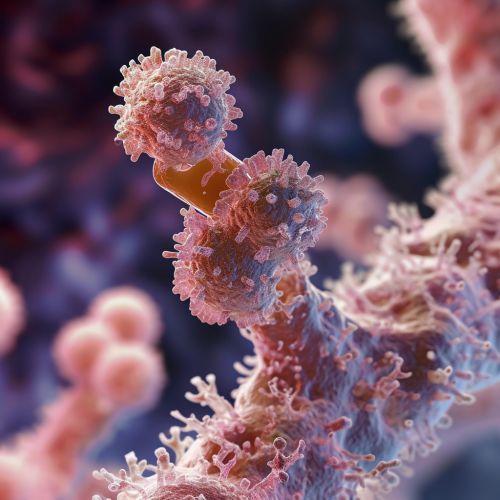Chemokine receptor
Introduction
The chemokine receptor is a type of GPCR that specifically binds and responds to a variety of chemokines. Chemokine receptors are integral membrane proteins that are predominantly expressed on the surface of certain cells, such as leukocytes. They play a crucial role in the immune response by guiding the migration of cells.


Structure and Function
Chemokine receptors are composed of seven transmembrane domains, an extracellular N-terminus, three extracellular loops, three intracellular loops, and an intracellular C-terminus. The binding of chemokines to their respective receptors induces a conformational change in the receptor, leading to the activation of intracellular signaling pathways.
The primary function of chemokine receptors is to mediate the chemotactic migration of leukocytes towards the source of chemokines. This is particularly important in the immune response, where chemokine receptors guide immune cells to sites of infection or inflammation.
Classification
Chemokine receptors are classified into four main families: CCR, CXCR, CX3CR, and XCR, based on the type of chemokines they bind. Each family of receptors binds to a specific subset of chemokines, allowing for a high degree of specificity in the immune response.
Role in Disease
Alterations in chemokine receptor function can contribute to a variety of diseases. For example, mutations in the CCR5 receptor are associated with resistance to HIV infection. Additionally, overexpression of certain chemokine receptors, such as CXCR4, has been implicated in cancer metastasis.
Therapeutic Target
Due to their role in disease, chemokine receptors have become a focus for therapeutic intervention. Several drugs that target chemokine receptors have been developed and are currently in clinical use or undergoing clinical trials. These include Maraviroc, a CCR5 antagonist used in the treatment of HIV, and Plerixafor, a CXCR4 antagonist used in stem cell mobilization.
